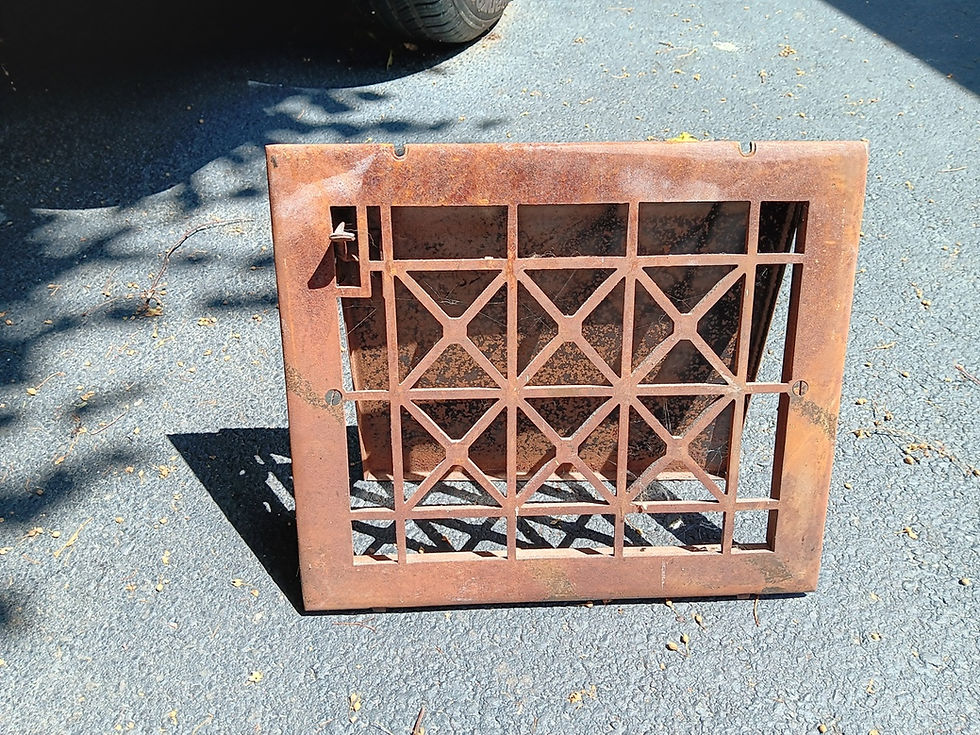Ideas from Ed: Arbor Day (Part 2 of 2) (Volume 6, Issue 10)
- edwardpetrus

- Sep 30, 2023
- 3 min read
If you haven’t had a chance to read last month’s column about my arbor project, you might want to before delving into this month’s episode. I left off after painting the pieces which will become the arbor. I am pleased with how they look. You can see part one here: www.lcppreserve.org/post/ideas-from-ed-arbor-day-part-1-of-2-volume-6-issue-9
(You may have to copy and paste that link if it doesn't take you directly there...)
I sometimes do my best thinking while lying in bed trying to fall asleep! That’s when I developed my plan of installation. I cut a 6x6 to the length matching the width of the side panels. That wood, of course, was chemical treated for resistance to insects and rot. (Note that not all treated wood is the same. For a project like this, the wood must be tagged “End use: Ground contact” or perhaps other words indicating the same thing.) I also cut treated wood 2x4s to the same length, and ripped them in half on a table saw.


I marked where the width of the side panels would be on the face of a 6x6, and attached one of the 2x4 pieces adjacent to the mark. I used 3” long ceramic-coated screws which can resist the chemicals in the wood.

I used a heavy-duty electric drill with a long bit to drill through the 6x6s in 2 locations, one hole near each end. My plan was to drive about 2 feet of #4 rebar through those holes into the ground to anchor the 6x6s in place. (Rebar is named “in eighths of an inch,” so #4 bar is 4 eighths, or ½” in diameter.) Rebar is not smooth. The ridges give it “grip” when used for things like concrete reinforcement. To drive rebar through a hole in the wood, it’s best to drill the hole slightly larger or the ridges will make the task very difficult. I located the holes directly under the location where the second piece of 2x4 would attach.

I was worried that the arbor would have a lot of side-to-side “give” so I drew some fancy curved braces onto additional pieces of treated wood, and cut them on my bandsaw. Because some of the curves are a bit sharp and the wood is thick, I needed to use a narrow (1/8”) blade.


They received a good coat of primer and paint.

6x6s are actually 5 ½” x 5 ½”, and the site where they are being installed does slope from side to side. I knew that one of those “footings” would be nearly buried while the other stuck out of the ground. I used the 3-4-5 method to be sure they are “square” and spaced them at 52 ½” to match the proposed attachment points of the top onto the arbor sides. (If you don’t know what the 3-4-5 method is, do a quick internet search. It’s vital information.)

I made sure that each footing was level along its length as well as between them. I didn’t have a level on hand long enough to span the latter distance, so I improvised by placing my shorter level onto a section of straight plastic pipe. When I drove the rebar through the footings, I was careful to keep from throwing things from level.

Here are the completed footings, ready for the rest of the installation.

Here are the pieces just before assembly.

I thought about screwing down each end and then trying to put the top onto it, but decided since I was working alone to put things nearly in place and assemble them on the ground. Then I would just need to tilt it into position. It turns out that was a good decision. The top (the original door) was just slightly narrower than the sides, so I centered it.

Once tipped into place, I drove screws through the arbor into the footings. Although the fancy corner braces I made have no doubt helped, there’s still some side-to-side wiggle that I’m not happy about. In a perfect world, this would not be an issue at all, but I always like to over-build things because oftentimes the unexpected will occur. (Hmmm. Maybe a grandchild trying to climb this? I’m just saying!) I will no doubt be attaching additional bracing to make things a bit more rigid.
Here’s the completed project, from my end. Now it’s my wife’s turn. She has to plant the climbing roses!

I hope all your projects go well. Thanks for reading, and happy restoring!
Ed
If you’d like to download a PDF of this “Ideas” column, click here:




Comments